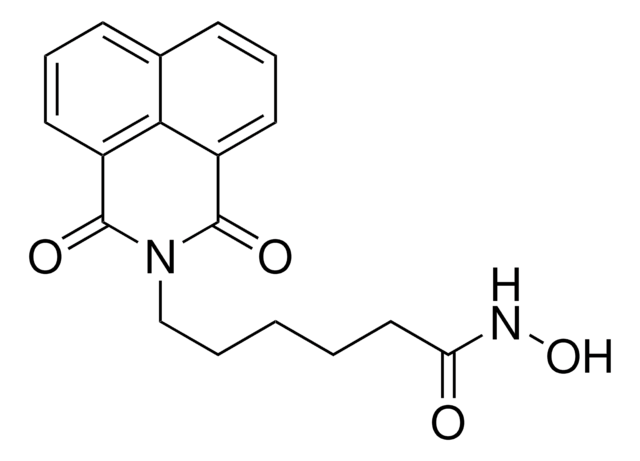D2629
6-(Dimethylamino)purine
≥98%
Synonym(s):
6-DMAP, N6,N6-Dimethyladenine
About This Item
Recommended Products
biological source
synthetic (organic)
Assay
≥98%
form
powder
mp
259-262 °C (lit.)
solubility
water: 50 mg/mL, clear to hazy, colorless to light yellow
storage temp.
−20°C
SMILES string
CN(C)c1ncnc2[nH]cnc12
InChI
1S/C7H9N5/c1-12(2)7-5-6(9-3-8-5)10-4-11-7/h3-4H,1-2H3,(H,8,9,10,11)
InChI key
BVIAOQMSVZHOJM-UHFFFAOYSA-N
Looking for similar products? Visit Product Comparison Guide
Related Categories
General description
Application
- as a supplement in GR-1 aa medium (bovine medium) for parthenogenetic activation of bovine oocytes to study its potential for embryo development
- in the activation step during the production of nuclear transfer embryos
- as a supplement in HCR2aa medium to activate interspecies embryos derived from interspecies somatic cell nuclear transfer (iSCNT) technique
Biochem/physiol Actions
Storage Class Code
11 - Combustible Solids
WGK
WGK 3
Flash Point(F)
Not applicable
Flash Point(C)
Not applicable
Personal Protective Equipment
Certificates of Analysis (COA)
Search for Certificates of Analysis (COA) by entering the products Lot/Batch Number. Lot and Batch Numbers can be found on a product’s label following the words ‘Lot’ or ‘Batch’.
Already Own This Product?
Find documentation for the products that you have recently purchased in the Document Library.
Customers Also Viewed
Our team of scientists has experience in all areas of research including Life Science, Material Science, Chemical Synthesis, Chromatography, Analytical and many others.
Contact Technical Service











